Charlie Jane Anders's Blog, page 42
January 18, 2016
I’ve changed how I think about genres

For years now I’ve been saying that genres are toolkits. You grab the tools you need to tell the story you want to tell. Maybe you need some screwdrivers from urban fantasy, maybe you need a lug wrench from space opera. As long as the story fits together and feels like one cohesive, logical universe, you’re all good. But in the course of promoting All the Birds in the Sky, I’ve been talking about genre a lot, and I’ve found myself thinking about it a totally different way. Now I’m thinking of genre as the skin, and the story is the bones, muscle, sinew.
In other words, the “genre” is what you see on the surface. It’s a story about vampires, so there’s blood and fangs and immortality and sunlight and maybe mind-control. It’s a story about spaceships, so there’s airlocks and vacuum and zero gravity and maneuvers and maybe space battles.
But that stuff is not the story. The story is all the stuff going on beneath the top layer, all of the events and all of the emotions and relationships that contribute to a narrative. Two people are friends, but one betrays the other. A young man and a young woman are both in love with the same old woman, and she doesn’t want either one of them. A man is taken captive and has to learn from his captors in order to escape from them. One country invades another. And so on and so on. And even those things are just the bones, where a lot of the story is in the sinew and the blood vessels.
The point is, you can tell a story about a rivalry on a spaceship or on a 17th century sailing ship, and it’ll change the story some – but not necessarily that much. (See: Star Trek and Star Wars both borrowing from World War II movies and just transplanting them to space.) When everything is working right, the genre elements actually give a shape and an added purpose to the stuff happening under the surface. You have an urban fantasy that is more thrilling, or makes more sense, because it’s urban fantasy as opposed to historical romance. It’s not a thing where you can put any skin on any body and it’ll work.
If anything, it’s the other way around – thinking of genre as skin has made me think of it as more essential and integral than when I was thinking of it as a toolkit. You can always make things work if you don’t have the exact right tool, but you would be pretty screwed without a skin.
Top image: Leprechaun in Space.
January 17, 2016
Here’s a beetle I drew in the notebook where I was scribbling...
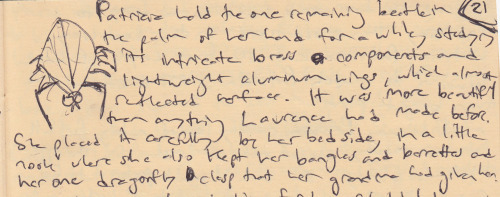
Here’s a beetle I drew in the notebook where I was scribbling the first (ish) draft of this novel. At one point, in the original draft, Patricia’s parents have locked her in her bedroom because she is grounded. And Laurence sends a swarm of tiny robot beetles to visit her, and they can create a screen that conveys messages from him. He offers to have his robot beetles bring her some nuggets from the fast-food restaurant a few miles away, but she says no thanks. One of the beetles stays behind in case she needs anything. They didn’t make it into the final book, but I still love Laurence’s brass-and-aluminum robot bugs.
January 16, 2016
"Take that word ‘insane’ and make it 'warrior.’ Take that word 'crazy’ and..."
- The Last Poets, “Homesick”
January 14, 2016
Here’s another quote from my book in animated gif form. Thanks...

Here’s another quote from my book in animated gif form. Thanks to the folks at Tor for creating these!
January 13, 2016
Writing a novel longhand is a terrible idea, but it’s the only way I know
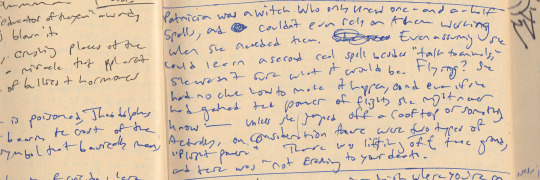
I’ve written like six and a half novels at this point and pretty much all of them started out as scribbles in notebooks. I have piles and piles of journals that are full of semi-illegible scrawls that I later had to type into a computer and clean up and then revise several times. There was a point back in early 2012 when I had a stack of notebooks containing a ton of material for All the Birds in the Sky, and I hadn’t transcribed them or anything yet. I was trying to describe my book in progress to someone at a con, and mentioned that it was all just in longhand. And if anything happened while I was traveling, that novel was gone – no way I could possibly reconstruct it or rewrite it from scratch. It was kind of a scary thought.
The sucky thing about writing books longhand is that you always end up with discontinuities, or things where you changed your mind halfway thru, and now things don’t match up. And it’s maybe even messier than a regular first draft. Plus the whole business of having to type it in to the computer always takes wayyyy longer than you think it will.
But it’s the only way I seem to be able to do a novel. Because writing with pen and ink makes it harder to keep going back and editing what I already wrote, and it feels more like writing in my personal journal and just writing down what I feel, without any big filter. You can maybe get more rawness that way. I just don’t self-censor as much with a pen and paper. And then the part where I have to type it all in is where I wind up making tweaks and fixes as I go, and it’s also a good way to start rethinking this godawful mess I’ve created and what I can do to make it work. The weird part is when I look back at those notebooks and there’s the occasional passage that made it into the final book more or less verbatim.
January 12, 2016
We All Love Characters Who Go Through Hell, But...
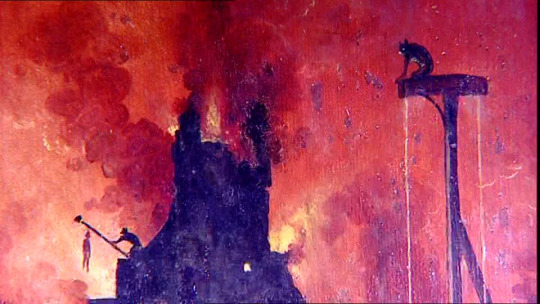
You know what drives me nuts? When I’m reading a book and the author totally lets the main character off the hook instead of letting them face the consequences of their choices. Or gives them an easy ride, rather than let them go through some real misery. We always want to see lovable sympathetic characters go through Hell. You know what ELSE drives me nuts though? When a character goes through shit that would drive the strongest person on Earth insane and just shrugs it off. That’s the worst.
Nothing throws me out of a book faster than a character who encounters unthinkable god-awful misery and just shrugs it off and goes back to obsessing about their love triangle or what to wear for a party. It’s a tricky balance to strike, because you don’t want a character to get so traumatized and depressed that they’re actually a basket case. That starts to get really painful to watch. But we have to feel the characters dealing with all the awfulness that’s been thrown at them. Or if they’ve gone numb, we need to know they’ve gone numb. That’s like a baseline thing for believable characters, and its incredibly hard to get right. One answer is to make the suffering just enough to keep them miserable without spilling over into “anybody in this situation would be in a fetal position forever” territory. But it’s super tough. Narrative sadism takes a LOT of practice.
Image: Hieronymous Bosch
January 11, 2016
At one point when I was writing a draft of All the Birds in the...
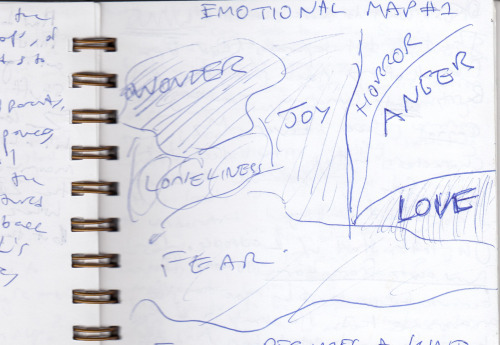
At one point when I was writing a draft of All the Birds in the Sky in a notebook and got really really stuck, I created an “emotional map” of the novel, from beginning to end. I don’t actually remember creating this, I just found it recently looking back thru my stuff. It’s pretty accurate tho.
January 10, 2016
The All the Birds in the Sky T-Shirt is for sale at the amazing...
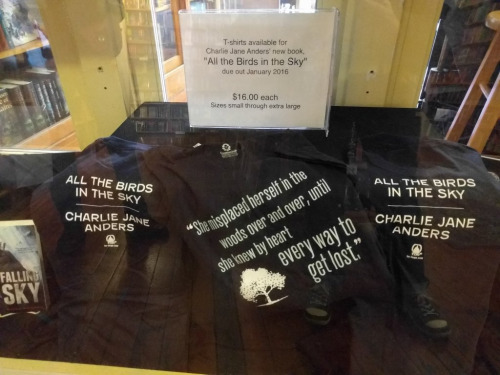
The All the Birds in the Sky T-Shirt is for sale at the amazing Borderlands Books! (Photo by Annalee Newitz)
January 9, 2016
Score! (@ green apple books sale table)
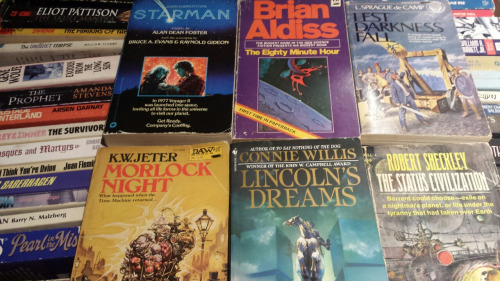
Score! (@ green apple books sale table)





